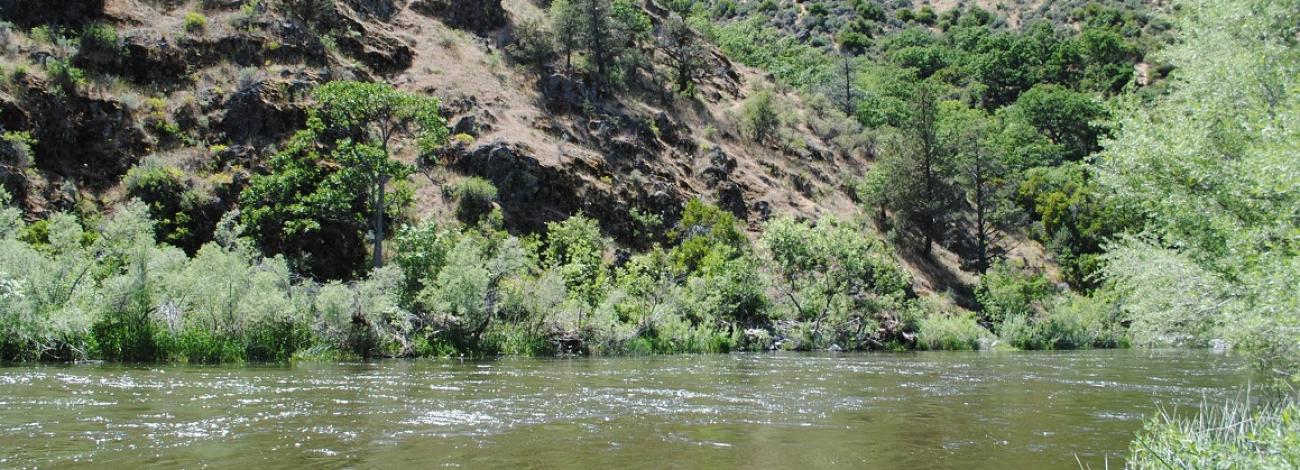
Klamath Wild and Scenic River
Klamath tributaries flow from Mount Shasta, Marble Mountain and the Siskiyou and Trinity Alps Wilderness Areas. The U.S. Forest Service and Bureau of Land Management manage the upper 127 miles of the Klamath, and the state of California, with support from the National Park Service and Native American tribes, manage the remainder. Tributaries are administered by the U.S. Forest Service, except one short segment of the Scott. The Klamath River is well-known for its beautiful scenery, and paddlers are attracted to its Class II to Class V rapids. The river is also an important wildlife habitat corridor, known for its raptors.
Just south of the Oregon Border, BLM’s Stateline boat ramp and primitive campground is used as a take-out point on the Klamath River for the 17-mile stretch of class I–V whitewater upriver.
- Outstandingly Remarkable Values

Fisheries
The river supports several anadromous species during most of their in-river life stages, including chinook salmon (spring and fall runs), coho salmon, steelhead trout (summer and winter runs), coastal cutthroat trout, green and white sturgeon, and Pacific lamprey. The evolutionarily significant unit of coho salmon, the Southern Oregon/Northern California Coast coho, is federally listed as a threatened species under the Endangered Species Act, and the Klamath River is designated critical habitat. The anadromous fishery supports the river's sport fishing guide and resort industry, Native American subsistence and ceremonial culture and the ocean commercial and sport fishing industry. Visitors also enjoy viewing salmonids, especially during migration seasons.
- California Wild & Scenic Rivers
